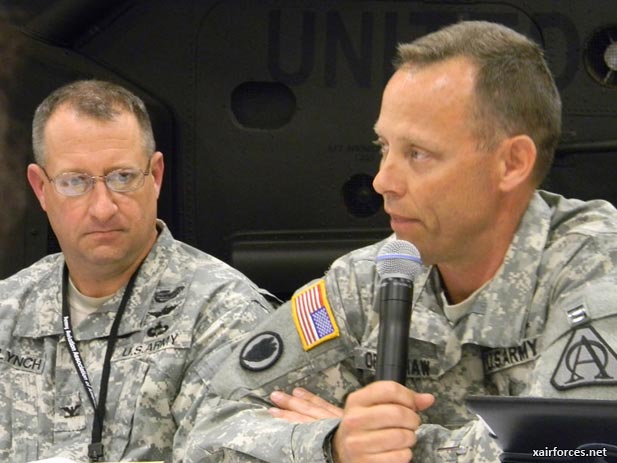
Latest Apache Block III Helicopter Controls Unmanned Aircraft

U.S. Army AH-64D Block III helicopter crews exercised directional control of the MQ-1C Grey Eagle unmanned aircraft system (UAS) during the recently completed initial operational test and evaluation (IOT&E) of the upgraded Apache.
The Army will decide whether to approve full-rate production of the Block III in July, including production of the mast-mounted UAS tactical datalink assembly (UTA) developed to control the Grey Eagle. The Army plans to acquire 690 Apache Block IIIs, mostly remanufactured by Boeing from earlier versions.
Apache Block IIs can receive streaming video from unmanned aircraft through the VUIT-2 (Video from UAS for Interoperability Teaming Level II) and follow-on MUMT-2 (Manned-UnManned Teaming-2) systems. The UTA is a two-way datalink that provides higher-tier Level 3 control of UAS sensors and weapons and Level 4 capability to redirect an unmanned aircraft to points of interest in flight. The system is contained in a doughnut-shaped, mast-mounted radome identical to the radome housing the current Longbow fire-control radar (FCR) and sharing 50 percent common components. It was developed by the Longbow llc joint venture of Lockheed Martin and Northrop Grumman. Future 24-aircraft battalions will have nine helicopters equipped with the FCS, nine with UTA and six with no mast assembly.
The UTA is a Ku-band system that currently can communicate only with the General Atomics Grey Eagle, although it will be further developed to operate in multiple bands. In a briefing at the AAAA conference in Nashville, Tenn., earlier this month, Lt. Col. Dan Bailey, the Army’s Apache Block III product manager, said the RQ-7 Shadow is in development testing for Ku-band interoperability, and the RQ-5 Hunter is being considered for the same capability. “We’re not sure that [smaller UAS] will ever move to this kind of capability, but we may not ever want to control them, as well,” Bailey said. “The Army is still feeling out that overall concept.”
The IOT&E testing was conducted at the Army’s National Training Center at Fort Irwin, Calif. Five Apache Block IIIs participated, including two with the UTA, two with the FCR and one “vanilla” helicopter. The interoperability testing also involved five Block II Apaches, a Grey Eagle unit based at Edwards Air Force Base, Calif., and the so-called AB3 National Airspace Trainer, a manned OH-58 helicopter serving as a UAS surrogate.
Senior Army officers said that Apache copilot gunners were easily able to control the UAS, but that tactics need to be fleshed out. “The performance of the system has been great [and] the aircrews’ interaction with it also was good,” said Col. Shane Openshaw, Apache project manager. “They went through a learning curve, because they’re learning how to apply tactics, techniques and procedures to the kit and work in a manned-unmanned teaming environment.”
Source: By Bill Carey - April 13, 2012 (ainonline.com)
Photo: Col. Shane Openshaw, the U.S. Army’s Apache project manager, right, and Col. John Lynch, training and doctrine command capability manager, discuss Apache Block III program April 2 at AAAA in Nashville. (Photoby Bill Carey)
(13.04.2012)
|